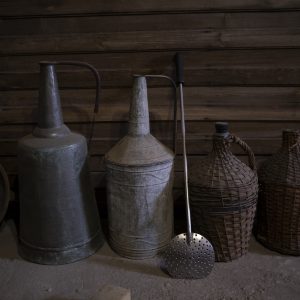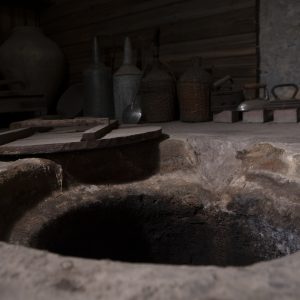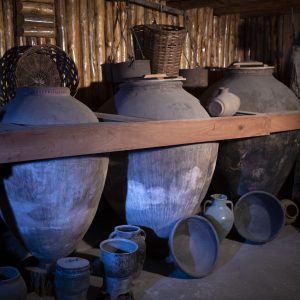Ashtarak is one of the important regions of Armenian winemaking culture, about which, along with numerous primary sources and researchers, significant data is also provided by the prominent writer, historian, and ethnographer Yervand Shahaziz in his book “History of Ashtarak” (Yerevan, “Hayastan” publ., 1987, 251 pages), and later supplemented by Gevorg Gevorgyan, whose manuscripts (HAI archive, Gevorgyan Gevorg, Ethnographic materials of Ashtarak, 1972, file 1, 99 pages) are kept in the Institute of Archaeology and Ethnography of the National Academy of Sciences of the Republic of Armenia.
Shahaziz began writing his work in 1908, completing it in 1934. In the study, which lasted more than a quarter of a century, giving a special place to the winemaking of the Ashtarak region, relying on earlier sources, Shahaziz comes from the depths of history and reaches the period in which he lived. Particularly noteworthy are the testimonies related to the winemaking culture of a relatively new period, especially since the author himself witnessed all this.
He writes that starting from the 18th-19th centuries, the grape growers of Ashtarak first harvested the grapes and exchanged them with the herders coming down from the Aragatsotn mountains, thus storing their winter supplies (oil, cheese, butter, etc.), after which they immediately started the grape harvest intended for wine.
The ethnographer notes that in the early period, the people of Ashtarak built their wine presses[1] right in the vineyards, thus living for two to three months of the year in temporary shelters made in the gardens. “…he, on the one hand, harvested the grapes, carried out with large milking pails the roof of the winepress, and poured right through the yerdik (roof opening) to the aragast (pressing floor), where they were pressed, and the muz (must) going like a stream, was poured into takars (large earthenware jars), on the other hand, the must be more or less settled in the takars, the clarified juice, or, as they say, kaghtsu, was carried with leshks (untanned calfskins), to his shiratun (wine cellar) and poured into karases (large earthenware jars, pitchers), on the third hand, the women have taken their share of kaghtsu, they cooked mat (a sweet grape preserve), they conserved and prepared shpot, dipped the rows of walnut, almond, melon seeds, made shudzhukh (churchkhela). There remained the remains of the grapes, the kncher (pomace), from which the Ashtarak resident used to distill oghi (fruit vodka) …” (Shahaziz 1987, 216).
After the beginning of the 20th century (that is, the time when Shahaziz started to create his work), the people of Ashtarak no longer had wine presses in their gardens. Instead of the former wine presses, at that time they built three-walled, open-faced, light, temporary structures in the gardens – “dagans”, in which the gardeners in the gardens during the months of fruit and grape harvest sheltered from the rain. “…long ago the grapes are no longer pressed in the vineyards, but during the harvest, on the one hand, the grapes are harvested, and on the other hand, they are transported by horses, donkeys and carts to the village, where aragasts and takars are built in the houses, everywhere” (Shahaziz 1987, 218).
Those buildings were called hndzanabags, but Shahaziz finds it difficult to specify their structure. P. Proshyan describes the hndzanabag as follows: “It is a ruin, the surfaces of the square hewn stones along its approximate length are pitted in places by the eroding force of time. The archaeologist would date it to at least 700-800 years” (P. Proshyan, Tsetser, Tiflis, 1889, publ. M.D. Rotinyants, p. 48).
The writer-ethnographer presents with special luxury and colorful images the Ashtarak resident who “entered the house” after the grape harvest, already in winter, when his revelry began and “he put the new wine on the table, which had not even fermented and, one might say, was machar – “a tart, sweet and mild, cloudy kaghtsu, which has been in the process of fermenting, of becoming a real wine” (Shahaziz 1987, 219).
Agreeing with all the claims of the Ashtarak resident’s security, Shahaziz, however, opposes the wording “wine-drinking Ashtarak resident”, noting that, yes, a lot of wine is created in Ashtarak, but the people of Shirak and Pambak drink more Ashtarak wine and oghi than those who make them. “…he drank and drinks, his table was not without wine and oghi, but he drank in moderation, drunkenness has always been an unfamiliar passion to the Ashtarak resident.” … The old Ashtarak resident liked to be happy, to have fun, but those “entertainments never had a hooligan character” (Shahaziz 1987, 220).
G. Gevorgyan writes about the wine-making culture of Ashtarak in more detail and vividly. He writes that the karases in Ashtarak were washed with water, then the inner walls were smeared with melted fat, after which they were filled with must, which had to be filled to a special extent, because in case of filling it completely, the karascould burst during fermentation. In order to avoid all this and to be safe, people placed the karases on cemented aragasts, thanks to which, in case of breaking the karas, the must would not be absorbed into the soil, but would flow and fill the takar.
Gevorgyan writes that after gaining the possibility of using sulfur, Ashtarak winemakers disinfected the barrels more easily. They burned sulfur-coated papers in an empty barrel, which perfectly cleaned it of all the bacteria and fungi that could remain and spoil the wine. “After filling the karases with must, after a few days it starts to boil, producing carbon dioxide gas, so if the number of karases is large, it is terrible to enter the cellar at that moment, a person can be suffocated by the gas. There have been cases when a person has suffocated while removing the knjir (pomace) from the takar” (Gevorgyan 1972, 70).
About a month later, it is necessary to “krtel” the wine, which means to separate the dirt (lees) from the clear wine. This is also an important and interesting operation, which the ethnographer presents in full detail and mentions the dialect names of all the tools used in the whole process (aragast, takar, gup, tik, karas, abigardan, jujum (a measure equal to half a bucket), parch, kereghan (for drinking)).
It was necessary to insert the long stick into the barrel, to understand how much part is sediment, how much part is clear wine, then to remove the clear wine with the abigardan and pour it into another, already cleaned and prepared karas. “Later, when the barrel entered use in Ashtarak, the siphon, a rubber tube, also entered use with it, since the abigardan would not fit into the barrel, then, when they measured the amount of sediment in the karas or the barrel full of wine, one end of the rubber tube was tied to the measuring stick from where the wine and sediment separate from each other, then the stick was lowered into the karas or barrel with the tube, the wine was drawn by mouth from one end of the tube, and when the wine started to flow, they put it into an empty karas or barrel, the pure wine was transferred to an empty barrel or karas. In this way, the barrel was filled to the top and the mouth was closed with a wooden stopper, sulfur powder was poured around the stopper… to protect it from vinegar flies” (Gevorgyan 1972, 70).
It is also noteworthy that the Ashtarakians strictly forbade placing cheese, pickles, kerosene or dried spices near the wine karas or barrel, because wine is sensitive to smells and tastes and can absorb them. “…imagine that you are drinking wine and smell kerosene” (Gevorgyan 1972, 71). G. Gevorgyan also refers to the famous grape variety “Kharji” and notes the history of obtaining a “Sherry” type wine from it. “An Ashtarakian noticed early on that a membrane had formed on the surface of the wine in his karas, he thought that the wine had gone bad, but when he drank it, he saw that it was tastier and more aromatic, not realizing that this membrane on the surface of the karas was nothing other than a sherry fungus. … The first study of this fungus was conducted by the winemaker Afrikyan, who visited Ashtarak. She found it better than Spanish sherry, and thanks to the Soviets, a winery was built in Ashtarak. It was thanks to the winery that at the 1970 international wine tasting [the wine] won first place in the world, receiving a gold medal” (Gevorgyan 1972, 71-72
[1] On the wine press culture of the Ashtarak region, see G.S. Tumanyan, Wine Press Culture in Armenia, Yerevan, “Zangak-97”, pp. 31-32, 40, 44, 50-54; H.L. Petrosyan, S.G. Hobosyan, H.P. Hakobyan, Medieval Wine Presses of Ashtarak, Yerevan, 1989, 90-92; E.N. Hakobyan, The Architecture of the Folk Dwelling of the Ashtarak Region, Yerevan, pp. 34-39.
Gevorg Gyulumyan
National Academy of Sciences of the Republic of Armenia
Institute Archaeology and Ethnography








 +374 44 60 22 22
+374 44 60 22 22
 Armenia Wine Company 3 Bild., 1Dead-end, 30 Street, Sasunik 0223
Armenia Wine Company 3 Bild., 1Dead-end, 30 Street, Sasunik 0223

